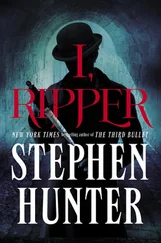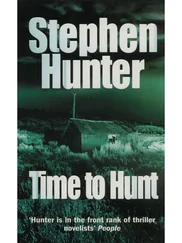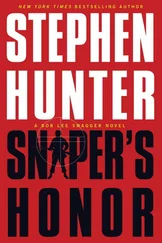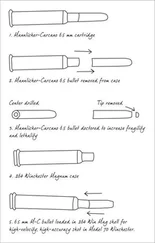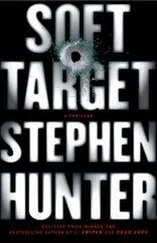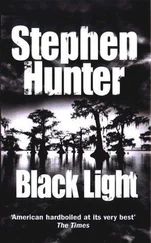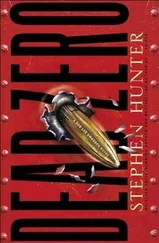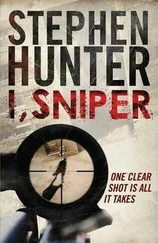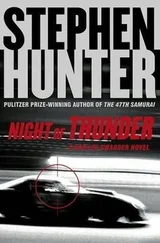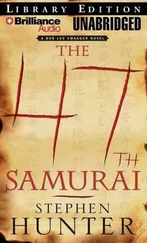But Dobbler was not thinking of dead presidents and their Roman temples or obelisks, nor of cherry trees. He was not thinking of the setting sun, or the pulsating traffic, or anything at all like that, though he enjoyed them all. He was thinking of teeth.
Glorious, glorious teeth. Teeth that never lie. That cannot lie. That are incapable of deceit.
For he had them now in his briefcase and would not let them go. He had survived.
The teeth were not actually in the briefcase, of course; what lay inside were Bob Swagger’s dental X rays, taken from his dentist in Blue Eye, Arkansas, and forensic X rays of the blackened jaws found in the ashes of the Aurora Baptist Church, as taken by the sublimely gifted technicians of the Federal Bureau of Investigation crime lab in Washington, D.C., not a mile as the crow flew from where Dobbler now trod.
But neither the doctor nor Colonel Shreck had trusted the technicians. They had waited patiently until the right time and then the colonel made one of his magic phone calls to someone – Dobbler didn’t even want to know who – and Dobbler went to Washington. He’d just gotten the two sets of X rays, and a more formal examination awaited them back at RamDyne. But he couldn’t wait; he’d stolen into a public men’s room, and pressed the two plastic membranes against the fluorescent lights. One by one he had chalked off the similarities. Yes, yes, there were three fillings on the left-hand side, in the second molar, the canine and the incisor. Yes, the first took the rough configuration of a star; the second was smaller, shaped roughly like an hourglass; and the third looked like the map of Sicily. Then there was the same slightly collapsed left lower jaw, where three teeth, for some unknown architectural reason, had sadly collapsed inward just a bit, with the middle one slightly twisted.
Those were the major parallels and he could see about a thousand minor ones. In fact, you could lay one X ray over the other, and though the scale was slightly off, it was obvious that the same mouth had been photographed.
That was it. A man may lie to his psychiatrist, his doctor, his wife, his employer, to God and to Mom, but his teeth tell all; they cannot lie. They yield all secrets. They confess. They are unambiguous.
So Dobbler had called Colonel Shreck, and then wandered across the mall and over to the tidal basin; it was time to enjoy life, which suddenly seemed mud-luscious with possibility. The whole world beckoned, offering its pleasures to Dr. Dobbler. He was purely, sheerly happy .
“Dr. Dobbler!”
Dobbler turned at his name, stunned that anyone knew him, and saw only a gray sedan, unremarkable, and in it a man who was also unremarkable but tough and coplike, whom he recognized from RamDyne.
“Dr. Dobbler. Colonel Shreck sent us. They need you.”
“But – ” Dobbler raised his briefcase as if to protest and ward them off. See, it’s in here, he wanted to say, it’s over, the evidence that it’s over, finally, is in here.
“We got some big problems,” said the man, and Dobbler read fear in his eyes.
It was technically the Fourth Battalion (Air-Ranger) of the First Brigade (Air-Ranger) of the elite Acatatl Division – but everybody called it Panther Battalion.
Nick read on. In April of 1991, the unit, some 250 men, a tough, blooded, jungle-warfare-center-trained elite of the Salvadoran Armed Forces, had been pulled from front-line antiguerrilla duty in the mountains for an intensive course in psychological warfare techniques. Because at the time the press was especially suspicious of the president’s wild popularity in the wake of the Persian Gulf War, it was being extremely vigilant and cynical about American military aid to foreign countries; so the contract couldn’t be taken on by certified American military or CIA special operations people. Through an elaborate scheme of diverted funds, this RamDyne outfit had gotten the contract. And for a month in an isolated jungle area, RamDyne operatives, veterans of some of the gaudiest special operations in history, had schooled the young Latinos in interrogation techniques, population control, intelligence gathering, ambush and counterambush, sniping and countersniping, a whole crash course in the dirty nitty-gritty of low-intensity warfare.
But there was a weird chemistry loose in that encampment.
“Unconfirmed reports insist,” read the FBI investigation, which was forwarded to the Senate Intelligence Committee but never put on the record as being too sensitive, “that American trainers exhorted these young soldiers with voodoo rituals, thought-control processes and animal sacrifices that went well beyond the range of normal professional military training.”
The file identified several of the trainers, and as Nick gazed at the abstracted dossiers, he saw nothing that surprised him. The trainers were drawn from the various American elite units that had fought secret battles all around the world since the war in Vietnam. The honcho appeared to be an ex-Green Beret lieutenant colonel named Raymond Shreck, of Pottstown, Pennsylvania, a heavily decorated veteran of Korea, where he had been the youngest master sergeant in the United States Army at nineteen, an early Green Beret who’d helped train the Bay of Pigs volunteers in the early sixties when he was a young major, and a heavy-action three-tour ’Nam vet until, in 1968, he’d been court-martialed for torturing suspected Viet Cong agents. Somehow the Agency had taken care of him; he joined RamDyne the next year. His number-one man was Master Sergeant John D. (“Jack”) (“Payne-O”) Payne, of New York, New York, a former special forces noncommissioned officer, also with an extraordinary combat record in Vietnam. After the war, however, he had trouble readjusting to duties, was nabbed in an elaborate scheme to defraud the PX out of several thousand dollars, and, in lieu of a jail sentence and a dishonorable discharge, took an early retirement in 1978.
I’ll bet you’re a couple of tough pricks, thought Nick.
So maybe Payne and Shreck, pissed off the way their careers had gone belly-up, with their extraordinary records in combat and their flat-out willingness to go all the way were the true authors of what happened next. But there were other authors, as well. There was the increasingly hysterical right-wing fervor of the government of El Salvador; there was a stunning leftist victory, where a battalion of government troops had gone to sleep without putting out perimeter security and got badly shot up the next morning, losing twenty-eight men, all of them in front of American network news cameras; there was the pressure from Washington for results, results, results, something to show that American policy was working; and there was the anger, the fear, the bravado of Panther Battalion itself.
On June 8, 1991, Panther Battalion was airlifted from its secret mountain training camp into Ocalupo Valley, three hundred miles away, to conduct operations against a well-established guerrilla infrastructure. As the Panthers – so called because of their black and green striped jungle fatigues and their black berets – moved into the village of Cuembo, they came under sporadic sniper fire from a tree line flanking the village. The commander, Brigadier General Esteban Garcia de Rujijo, sent a reconnaissance squad into the village. Moving through the village square, the recon squad was caught in a clever crossfire. Two automatic weapons killed every single man. The guerrillas then mutilated the corpses and moved out.
It was the village of Cuembo that felt the full rage of Panther Battalion. Later (but unconfirmed) reports insisted that American training officers accompanied Panther Battalion into Cuembo but this was never proved. What is beyond dispute is that within the space of two hours on the afternoon of June 9, 1991, Panther Battalion killed over two hundred men, women and children. They were herded to the banks of the Sampul River, and there machine-gunned by the Panthers’ automatic weapons. Dead children floated in the Sampul for days.
Читать дальше

